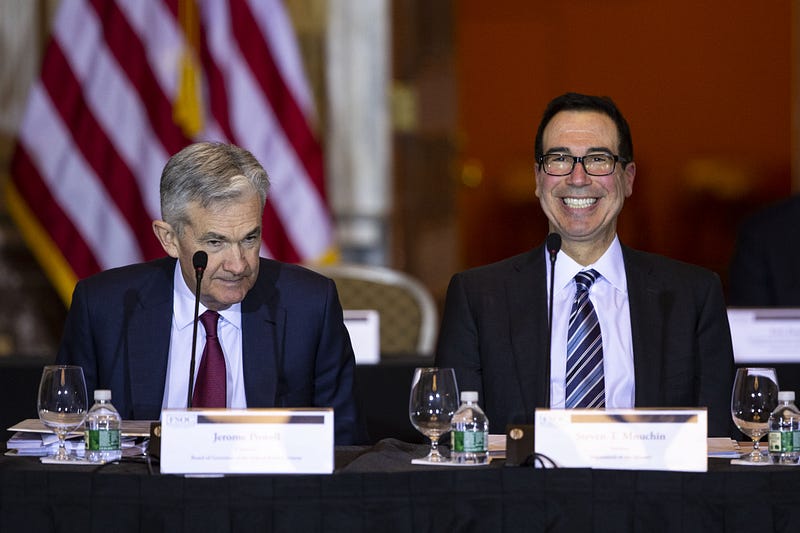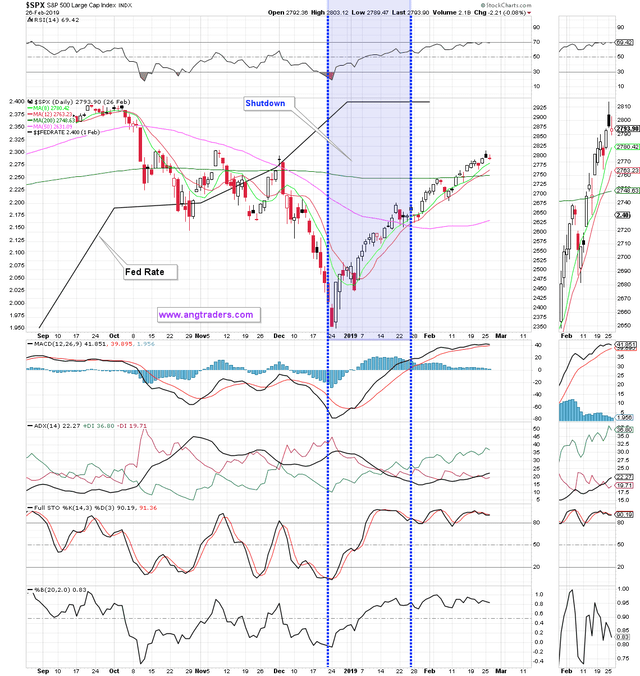Similar To 2018
Similar to 2018

At the end of 2018, Trump shut down the government for a record 35 days. Because the Fed was raising rates and reducing its balance sheet, the SPX dropped in the lead-up to the closure, but rallied hard once the shutdown started.
The government was shut down on Dec 22/18, and the very next day Mnuchin made phone calls to the major bankers and the Fed, and convened a meeting of the President’s Working Group on Financial Markets on Christmas eve. As a result, the Fed stopped raising rates and the banks loosened lending. Fear of a shutdown was more damaging than the shutdown itself.

The current situation has some similarities to 2018:
- the Fed is reducing its balance sheet (QT),
- rates have been rising,
- rates are paused for the month of October,
- fear of a shutdown is intense,
- and a (45-day) continuing resolution has been implemented to start the new fiscal year.
In 2018 (fiscal 2019):
- there were two continuing resolutions that funded the government until 1) December 7, 2018, and 2) December 21, 2018, after which, the government shutdown lasted 35-days, ending on Jan. 25, 2019.
- the Fed (Powell) resumed rate hikes in November and again in December.
The current continuing resolution ends November 14, one day before the quarterly interest payment is due. We can’t know at this point, but we suspect that either a budget is agreed to before Nov. 15, or (like 2018) there is another continuing resolution.
What the Fed is going to do with rates in November is also unknown, but the suspicion is that Powell sees the parallel with 2018 and will hold rates as they are — using whatever excuse is available to him.
When we look back at the fund-flows in late 2018, leading up to the shutdown and during the shutdown, it turns out that in December the net-transfer had collapsed from November’s +$212B, down to just +$9B (November has the quarterly interest payment, and December has a tax-take). This low fund-flow, combined with Powell’s incessant rate hikes and investor anticipation of the shutdown, explains the December 2018 stock market pullback.
During the month of the shutdown (January 2019), the net-transfer was +6B — lower than December, but not by much — and the stock market rocketed higher!
Returning to today, we have:
- a September net-transfer that is considerably higher than normal (see below),
- a much higher non-discretionary portion of the budget,
- the start of a presidential election year which is nearly always positive in net-transfers,
- and a political opposition that is in disarray in its attempt to implement austerity and bring down the Government.
The current situation implies that, although there could be volatility, the market will stay in its primary bull trend during fiscal-2024.
More By This Author:
The Government Funds The Economy, Not The Other Way Around
Investor Sentiment And Stock Market Timing
The Stock Market Floats On Fund-Flows
SPX



